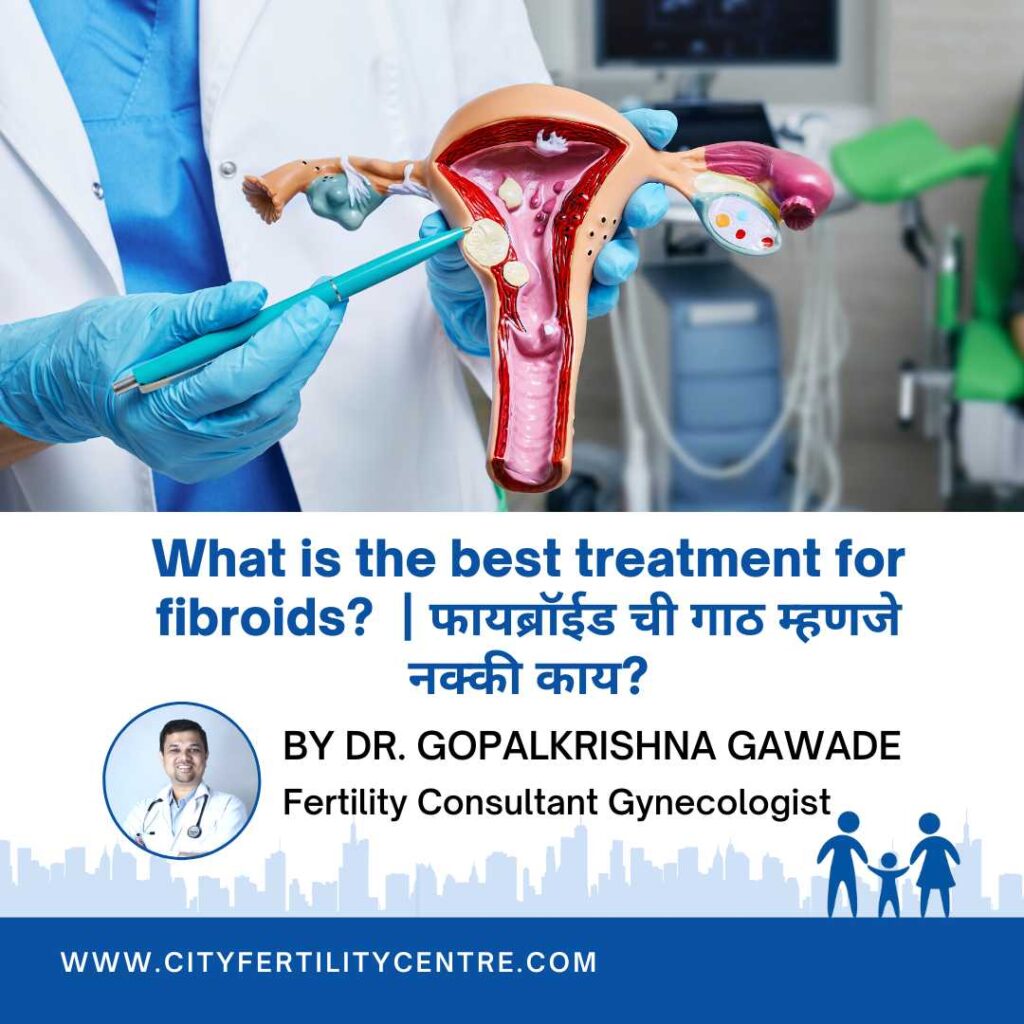
Uterine Fibroids Intervention Radiologys Role
What are uterine fibroids and how does intervention radiology help in its treatment? This question affects many women, and understanding the answers is crucial for informed healthcare decisions. Uterine fibroids, noncancerous growths in the uterus, are surprisingly common, impacting a significant portion of women during their reproductive years. Symptoms can range from mild discomfort to debilitating pain, affecting daily life and relationships.
Thankfully, advancements in intervention radiology offer minimally invasive alternatives to traditional surgery, providing hope and effective treatment options for women struggling with fibroids.
This blog post delves into the world of uterine fibroids, exploring their various types, symptoms, and potential complications. We’ll then examine the groundbreaking role of intervention radiology, focusing on techniques like uterine fibroid embolization (UFE) and magnetic resonance-guided focused ultrasound (MRgFUS). We’ll compare these methods to more traditional surgical approaches, helping you understand which option might be best suited for your individual needs and circumstances.
Get ready to learn how modern medicine is empowering women to take control of their health and well-being.
What are Uterine Fibroids?
Uterine fibroids, also known as leiomyomas or myomas, are noncancerous tumors that grow in the uterus. They’re incredibly common, affecting an estimated 70-80% of women by the age of 50. While the exact cause remains unknown, several factors like genetics, hormones, and race seem to play a role in their development. Understanding their various types, locations, and potential impact is crucial for effective management.
Uterine Fibroid Types and Locations
Uterine fibroids can develop in different parts of the uterus, influencing their size, growth pattern, and associated symptoms. The location significantly impacts the treatment strategy. Fibroids are broadly classified based on their location within the uterine wall.
Uterine Fibroid Symptoms
The symptoms experienced by women with uterine fibroids vary greatly depending on the size, number, and location of the fibroids. Many women have no symptoms at all and discover fibroids incidentally during a routine pelvic exam or imaging test. However, for those who do experience symptoms, they can range from mild discomfort to significantly debilitating conditions.
Potential Complications of Untreated Uterine Fibroids
While most uterine fibroids are benign and don’t cause serious health problems, untreated fibroids can lead to various complications that negatively impact a woman’s quality of life. These complications can range from anemia due to heavy menstrual bleeding to fertility issues and even the need for a hysterectomy. Early diagnosis and appropriate management are key to preventing these complications.
| Fibroid Type | Location | Symptoms | Complications |
|---|---|---|---|
| Intramural Fibroids | Within the uterine muscle wall | Heavy menstrual bleeding, prolonged periods, pelvic pain, bloating, pressure on bladder or rectum | Anemia, infertility, miscarriage, premature labor |
| Submucosal Fibroids | Beneath the uterine lining | Heavy menstrual bleeding, prolonged periods, infertility | Anemia, infertility, miscarriage |
| Subserosal Fibroids | On the outer surface of the uterus | Abdominal pain, pressure, bloating | Infertility, torsion (twisting of the fibroid cutting off blood supply), bowel or bladder issues |
| Pedunculated Fibroids | Attached to the uterus by a stalk | Variable, depending on size and location; may be asymptomatic | Torsion, rupture, pressure on adjacent organs |
How Uterine Fibroids Impact Women’s Health

Source: vavascularinstitute.com
Uterine fibroids, while often asymptomatic, can significantly impact a woman’s overall well-being, affecting her reproductive health, daily life, and mental health. Understanding these impacts is crucial for effective management and support.
Reproductive Health Impacts
Fibroids can interfere with fertility and pregnancy. Their size and location within the uterus can obstruct the fallopian tubes, hindering the passage of sperm or eggs. Implantation of a fertilized egg may also be difficult, leading to infertility or recurrent miscarriages. During pregnancy, large fibroids can cause complications such as premature labor, placental abruption, or obstructed labor.
Postpartum, fibroids can contribute to excessive bleeding. The presence of fibroids doesn’t automatically mean infertility or pregnancy complications, but they certainly increase the risk.
Impact on Daily Life and Physical Activity
The symptoms associated with fibroids, such as heavy bleeding, pelvic pain, and abdominal bloating, can significantly disrupt a woman’s daily routine. Heavy menstrual bleeding can lead to fatigue, anemia, and weakness, making it difficult to perform everyday tasks or maintain an active lifestyle. Pelvic pain can limit physical activity, impacting exercise routines and recreational pursuits. For women with demanding jobs requiring physical exertion, fibroids can lead to absenteeism and reduced productivity.
Imagine a teacher constantly experiencing debilitating cramps, or a construction worker struggling with heavy bleeding. These are real-life scenarios impacted by fibroids.
Psychological Effects of Living with Uterine Fibroids
Living with uterine fibroids can have a profound impact on a woman’s mental and emotional well-being. The chronic pain, heavy bleeding, and the uncertainty surrounding treatment options can lead to anxiety, depression, and feelings of helplessness. The constant worry about managing symptoms and potential fertility issues can take a toll on mental health. For example, a woman planning a family may experience significant stress and anxiety if fibroids are interfering with her ability to conceive.
Impact on Relationships
The physical and emotional challenges associated with fibroids can strain relationships. Chronic pain and fatigue can make it difficult to participate in intimate relationships or engage in social activities. The emotional toll of managing symptoms and dealing with medical appointments can also impact the quality of relationships with partners, family, and friends. A couple might find themselves struggling with intimacy issues due to pain or fatigue, for instance.
Open communication and understanding are essential in navigating these challenges.
Long-Term Health Consequences of Untreated Fibroids
Untreated uterine fibroids can lead to several long-term health consequences. It’s important to note that the severity of these consequences varies depending on the size, location, and number of fibroids, as well as the individual’s overall health.
- Severe anemia due to chronic blood loss
- Increased risk of urinary tract infections due to pressure on the bladder
- Reduced quality of life due to persistent pain and fatigue
- Infertility or difficulty conceiving
- Increased risk of complications during pregnancy and childbirth
- Development of larger fibroids, potentially requiring more invasive treatments
Intervention Radiology Techniques for Uterine Fibroids
Intervention radiology offers minimally invasive alternatives to surgery for managing uterine fibroids, significantly improving patient outcomes and recovery times. These techniques target the fibroids directly, reducing their size and alleviating symptoms without the need for major abdominal surgery. Two prominent methods are uterine fibroid embolization (UFE) and magnetic resonance-guided focused ultrasound (MRgFUS).
Uterine Fibroid Embolization (UFE)
Uterine fibroid embolization is a procedure where tiny particles are injected into the arteries supplying blood to the fibroids. This blocks the blood flow to the fibroids, causing them to shrink and eventually die. The procedure is typically performed under fluoroscopic guidance, allowing the interventional radiologist to visualize the blood vessels and precisely target the fibroids. A small incision is made in the groin to access the femoral artery, a catheter is then carefully advanced through the artery to the uterine arteries that supply the fibroids.
Embolic agents, usually tiny particles of polyvinyl alcohol (PVA), are then injected through the catheter, blocking the blood vessels feeding the fibroids.
Magnetic Resonance-Guided Focused Ultrasound (MRgFUS)
MRgFUS utilizes high-intensity focused ultrasound (HIFU) energy to heat and destroy fibroid tissue. The procedure is guided by real-time magnetic resonance imaging (MRI), which allows for precise targeting of the fibroids while protecting surrounding tissues. The patient lies inside an MRI machine, and ultrasound waves are focused on the fibroids, raising their temperature to a level that destroys the cells.
The MRI provides continuous monitoring to ensure accurate targeting and avoid damage to adjacent organs. This non-invasive approach requires no incisions and typically involves a shorter recovery period than UFE.
Comparison of UFE and MRgFUS
Both UFE and MRgFUS are effective minimally invasive treatments for uterine fibroids, but they differ in several key aspects. UFE is generally more widely available and can treat a broader range of fibroid sizes and locations. However, it carries a slightly higher risk of complications such as post-embolization syndrome (pain, fever, nausea), although these are usually manageable. MRgFUS, while offering a non-invasive approach with potentially faster recovery, is limited by the size and location of fibroids that can be treated effectively.
The availability of MRgFUS equipment is also more limited than that for UFE. The choice between the two procedures depends on several factors, including the patient’s individual circumstances, fibroid characteristics, and the availability of resources.
| Feature | UFE | MRgFUS |
|---|---|---|
| Invasiveness | Minimally invasive (small incision) | Non-invasive |
| Fibroid size/location limitations | Less restrictive | More restrictive |
| Recovery time | Generally longer | Generally shorter |
| Complications | Post-embolization syndrome possible | Rare, but potential for skin burns |
| Equipment availability | More widely available | Less widely available |
Pre- and Post-Operative Care for UFE and MRgFUS
Pre-operative care for both procedures involves a thorough medical history and physical examination, including blood tests and imaging studies to assess the fibroids and overall health. Patients may need to fast before the procedure. Post-operative care varies slightly. After UFE, patients may experience some cramping and discomfort, which can be managed with pain medication. They typically need to rest for a few days and avoid strenuous activity for several weeks.
After MRgFUS, recovery is generally faster, with minimal discomfort. However, patients should avoid strenuous activity for a period determined by their physician. Regular follow-up appointments are necessary to monitor the fibroids’ response to treatment and assess for any complications.
UFE Procedure Flowchart
A typical UFE procedure involves the following steps:
- Patient preparation and anesthesia
- Arterial access (groin incision)
- Catheterization of uterine arteries under fluoroscopic guidance
- Selective embolization of fibroid-feeding arteries
- Catheter removal and wound closure
- Post-procedure monitoring and recovery
Comparing Intervention Radiology with Other Treatments
Choosing the right treatment for uterine fibroids depends on several factors, making a personalized approach crucial. This section compares intervention radiology techniques with surgical options, highlighting their respective benefits, risks, and suitability for different patient profiles. Understanding these differences empowers women to make informed decisions alongside their healthcare providers.
Intervention Radiology vs. Myomectomy
Uterine fibroid embolization (UFE) and MR-guided focused ultrasound (MRgFUS) are minimally invasive intervention radiology techniques that offer alternatives to myomectomy, a surgical procedure involving the removal of fibroids. Myomectomy preserves the uterus, allowing for future pregnancies, while UFE and MRgFUS generally have shorter recovery times and less invasive procedures. However, myomectomy offers the advantage of directly removing the fibroids, resulting in a more definitive treatment for some women.
The choice between these options often depends on the size, number, and location of the fibroids, as well as the patient’s age and desire for future pregnancies. Larger fibroids or those in specific locations might be better suited for myomectomy, while smaller, numerous fibroids might be effectively treated with UFE or MRgFUS.
Intervention Radiology vs. Hysterectomy
Hysterectomy, the surgical removal of the uterus, is a more drastic procedure compared to intervention radiology techniques or myomectomy. It permanently ends a woman’s ability to bear children. While highly effective in eliminating fibroid symptoms, it carries a longer recovery period and greater risk of complications compared to less invasive alternatives. Intervention radiology is often preferred for women who wish to preserve their reproductive capabilities or avoid major surgery.
However, if fibroids are extremely large, numerous, or causing severe symptoms that don’t respond to other treatments, hysterectomy might be considered as a last resort.
Patient Testimonials (Fictionalized), What are uterine fibroids and how does intervention radiology help in its treatment
“After years of debilitating pain from fibroids, UFE changed my life. The recovery was quick, and my symptoms disappeared. I’m so grateful I didn’t have to undergo major surgery,” says Sarah, a 38-year-old who opted for UFE.In contrast, Maria, a 45-year-old, shares, “My hysterectomy was a difficult decision, but it ultimately resolved my severe fibroid-related bleeding and pain. The recovery was longer than I anticipated, but I’m now symptom-free and feel much better.” Finally, Lisa, a 35-year-old, explains, “Myomectomy was the right choice for me.
I successfully conceived and delivered a healthy baby after the procedure, and I’m very happy with the outcome.”
Treatment Comparison Table
The following table compares the recovery time, estimated cost, and potential long-term effects of the various treatment options. Note that costs can vary significantly depending on location, insurance coverage, and specific circumstances. Long-term effects can also vary based on individual responses and factors not accounted for in this simplified comparison.
| Treatment | Recovery Time | Estimated Cost (USD) | Long-Term Effects |
|---|---|---|---|
| UFE | 1-2 weeks | $5,000 – $10,000 | Potential for recurrence, menopause not induced |
| MRgFUS | 1-3 days | $10,000 – $20,000 | Potential for recurrence, menopause not induced |
| Myomectomy | 4-6 weeks | $10,000 – $25,000 | Scarring, potential for recurrence, preserves fertility |
| Hysterectomy | 6-8 weeks | $15,000 – $30,000 | Permanent cessation of menstruation and fertility |
Illustrative Examples of Intervention Radiology Success

Source: cityfertilitycentre.com
Intervention radiology offers minimally invasive treatments for uterine fibroids, leading to significant improvements in patients’ lives. The following case studies highlight the effectiveness and patient-centered approach of these techniques.
Successful UFE Case Study
Sarah, a 38-year-old woman, presented with heavy menstrual bleeding (menorrhagia) causing debilitating fatigue and anemia. She had tried various hormonal treatments without success. Ultrasound imaging revealed multiple fibroids ranging in size from 3 to 6 centimeters. Her gynecologist recommended uterine fibroid embolization (UFE). During the procedure, a radiologist accessed the uterine arteries via a small incision in her groin.
Tiny particles were injected, blocking blood flow to the fibroids and causing them to shrink. The procedure was performed under conscious sedation, and Sarah experienced minimal discomfort. Pre-procedure ultrasound showed numerous fibroids distorting the uterine cavity. Post-procedure imaging, conducted a few weeks later, revealed a significant reduction in fibroid size and improved uterine blood flow. Sarah’s menstrual bleeding decreased dramatically within a few months, her anemia resolved, and her energy levels significantly improved.
Her quality of life improved dramatically; she was able to return to work and enjoy her hobbies without the constant fatigue and heavy bleeding. The treatment plan was tailored to Sarah’s specific needs, considering her age, desire to preserve fertility, and the size and location of her fibroids. The minimally invasive nature of UFE avoided the need for major surgery, minimizing recovery time and potential complications.
MRgFUS Case Study
-year-old Maria experienced severe pelvic pain, heavy bleeding, and frequent urination due to several large fibroids. After undergoing a thorough evaluation, including MRI, she was deemed a suitable candidate for Magnetic Resonance-guided Focused Ultrasound (MRgFUS). Maria was apprehensive about surgery but was reassured by the non-invasive nature of MRgFUS. The procedure involved lying in a water bath while focused ultrasound waves, guided by real-time MRI, precisely targeted and heated the fibroids, causing them to shrink.
The entire process was monitored closely on an MRI screen. Before the MRgFUS, Maria’s MRI showed several large fibroids compressing her bladder and causing significant distortion of her uterine structure. Post-procedure MRI showed a considerable reduction in fibroid volume and improved anatomical relationships. While Maria experienced some mild discomfort and fatigue in the days following the procedure, she avoided the need for incisions, hospitalization, or general anesthesia.
Over the next few months, her pain decreased significantly, her bleeding normalized, and her urinary frequency improved. Maria’s experience demonstrates the benefits of MRgFUS in providing a non-invasive treatment option for women with symptomatic uterine fibroids who prefer to avoid surgery. The treatment plan for Maria was tailored to the size, location, and number of her fibroids, and the fact that she desired a non-invasive approach.
Concluding Remarks
Navigating the complexities of uterine fibroids can feel overwhelming, but understanding your treatment options empowers you to make informed decisions. Intervention radiology offers a powerful set of minimally invasive tools to effectively manage fibroids, minimizing recovery time and improving quality of life. While surgery remains an option, the advancements in UFE and MRgFUS provide viable alternatives with potentially fewer side effects and quicker recovery.
Remember, open communication with your doctor is key to finding the best treatment plan for your specific situation. Don’t hesitate to ask questions and explore all your available options. Your health journey is unique, and your healthcare team is there to support you every step of the way.
Question Bank: What Are Uterine Fibroids And How Does Intervention Radiology Help In Its Treatment
What is the success rate of UFE and MRgFUS?
Success rates vary depending on individual factors, but both UFE and MRgFUS generally boast high success rates in reducing fibroid size and symptoms. It’s crucial to discuss individual success probabilities with your doctor.
Are there any long-term side effects from UFE or MRgFUS?
While generally safe, potential long-term side effects are rare but can include changes in menstrual flow and, in rare cases, complications related to the procedure itself. Your doctor can discuss these potential risks with you.
How much do UFE and MRgFUS cost?
Costs vary widely depending on location, insurance coverage, and the complexity of the procedure. It’s best to discuss costs with your doctor and insurance provider to get a personalized estimate.
Can I get pregnant after UFE or MRgFUS?
Many women are able to conceive after UFE or MRgFUS. However, it’s important to discuss fertility implications with your doctor before undergoing either procedure.
